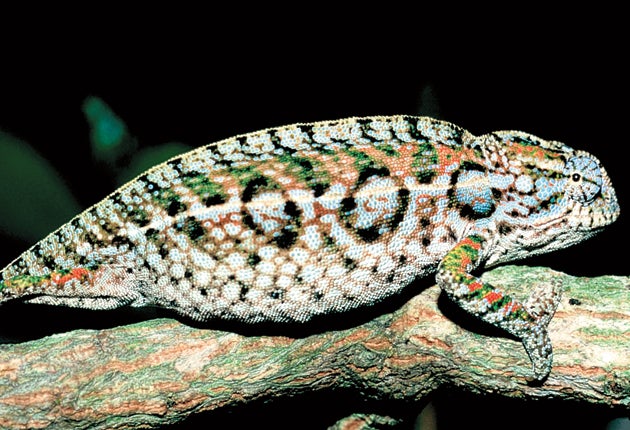Lizards are dying out because of climate change, study says

Your support helps us to tell the story
From reproductive rights to climate change to Big Tech, The Independent is on the ground when the story is developing. Whether it's investigating the financials of Elon Musk's pro-Trump PAC or producing our latest documentary, 'The A Word', which shines a light on the American women fighting for reproductive rights, we know how important it is to parse out the facts from the messaging.
At such a critical moment in US history, we need reporters on the ground. Your donation allows us to keep sending journalists to speak to both sides of the story.
The Independent is trusted by Americans across the entire political spectrum. And unlike many other quality news outlets, we choose not to lock Americans out of our reporting and analysis with paywalls. We believe quality journalism should be available to everyone, paid for by those who can afford it.
Your support makes all the difference.They have been around since the time of the dinosaurs and have in the past survived several global mass extinctions of species, but now lizards are at serious risk of disappearing from the face of the earth as a result of climate change, scientists said yesterday.
An international study has found that as many as 20 per cent of the 3,800 species of lizards could be extinct by 2080 if global temperatures continue to rise as predicted. In some parts of the world 12 per cent of the lizard populations that have been studied since 1995 have already disappeared – and researchers are blaming climate change.
Lizards, which include geckos, iguanas and chameleons, are often referred to as cold-blooded creatures but in fact their body temperature rises and falls with their exterior environment. They have to bask in the sun to raise their body temperature, and seek shade when it gets too warm.
Scientists fear that, in many parts of the world, temperatures have become too warm for the local lizards to be able to stay out during the hottest part of the day to catch enough food, causing the animals to weaken and die.
"The results were clear. These lizards need to bask in the sun to warm up, but it it gets too hot they have to retreat into the shade, and then they can't hunt for food," said Professor Barry Sinervo of the University of California, Santa Cruz, who led the study published in the journal Science. Other scientists have already documented an alarming loss of amphibian species – frogs, toads and newts – as a result of a complex interaction with a fungal infection and possibly climate change. But the latest study, which involved constructing a computer model to predict future extinctions, clearly points to rising temperatures alone for the decline of lizards.
"We did a lot of work on the ground to validate the model and show that the extinctions are the result of climate change. None of these are due to habitat loss. These sites are not disturbed in any way, and most of them are in national parks or other protected areas," Professor Sinervo said.
"Our research shows that the ongoing extinctions of lizards are directly due to climate warming from 1975 to the present... We thought we'd see evolution occurring in response to climate change, but instead we're seeing extinctions," he said.
"Beyond a certain point, the lizards can't adapt. We're predicting 40 per cent of local populations will go extinct and that will translate into roughly 20 per cent of species going extinct by 2080," Professor Sinervo added.
The scientists have studied some 48 species of spiny lizards at 200 sites in Mexico and found that between 1975 and 1995 some 12 per cent of the populations had gone extinct, even though their habitats had not changed noticeably. A device that could mimic the increase in body temperature of blue spiny lizards basking in the sun indicated that local temperatures had risen too high for the animals to cope.
"At the extinct sites, we found the hours they could be out foraging had collapsed. They would barely have been able to emerge to bask before having to retreat," Professor Sinervo said.
Lizard facts
Lizards are a large and diverse group of reptiles, with nearly 3,800 known species. They include geckos, chameleons and iguanas and are widely distributed around the world, but are concentrated in tropical and sub-tropical regions where high temperatures allow them to be active for long periods of time during the day all-year round.
Lizards play a critical role in the food chain, being an important food source for bigger animals such as snakes and birds, as well as controlling insect populations that might otherwise explode if left unchecked.
Most lizards are harmless to humans, with the huge Komodo dragon in Indonesia posing the greatest risk.
Join our commenting forum
Join thought-provoking conversations, follow other Independent readers and see their replies
Comments